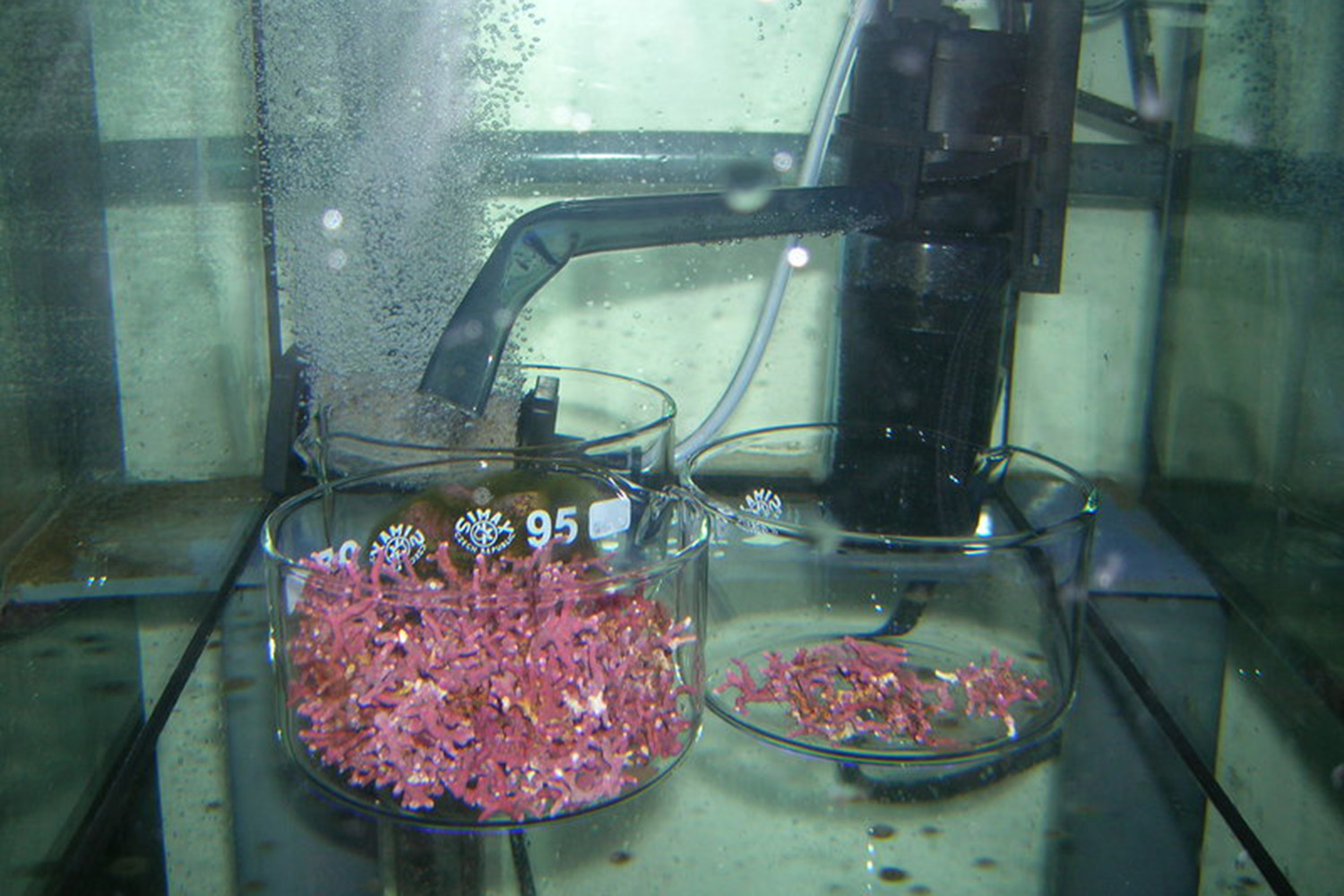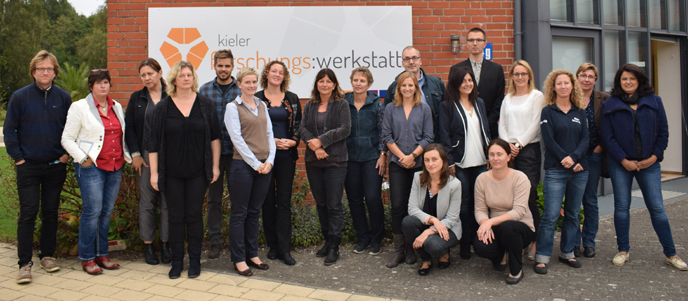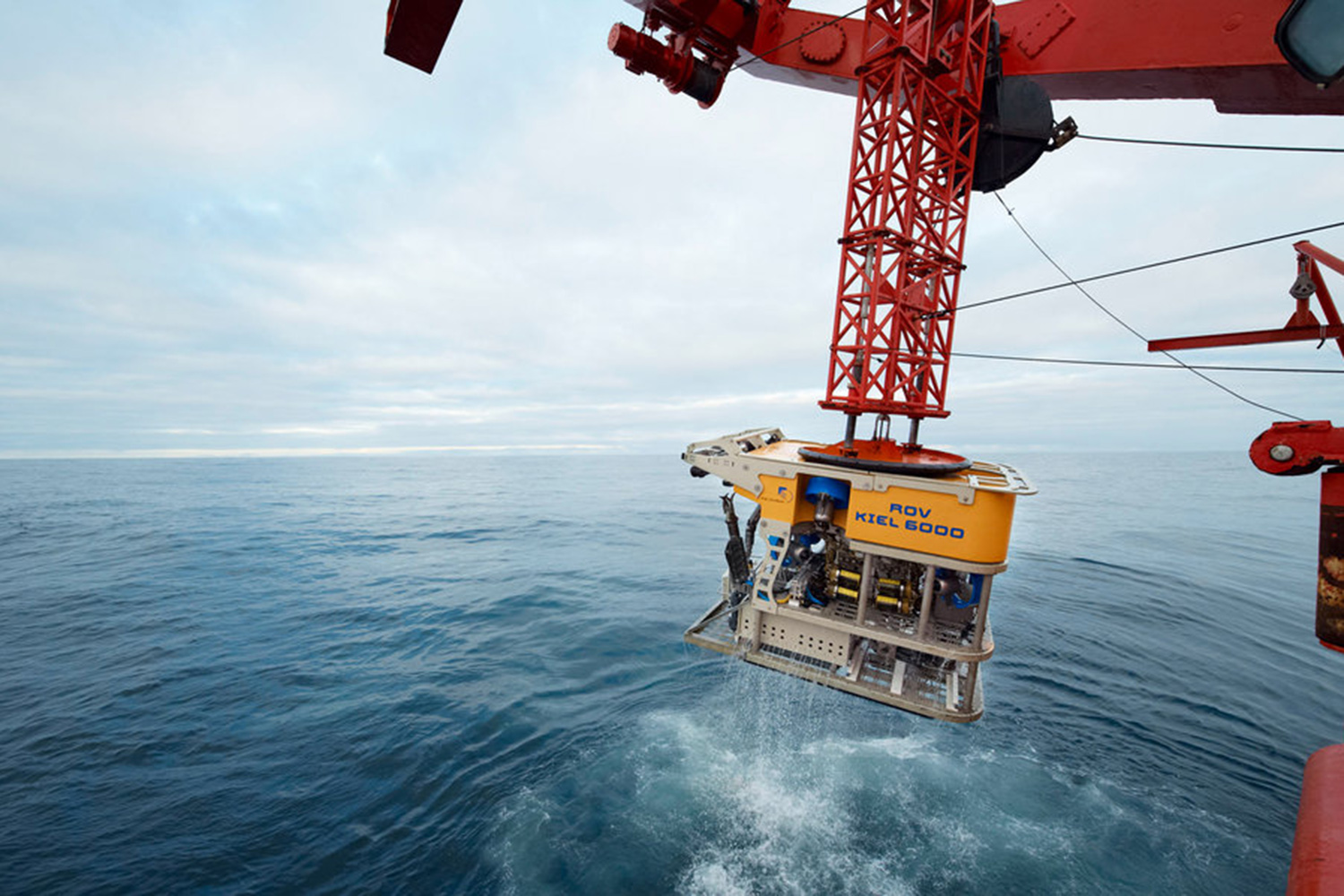In the course of global change and increasing ocean acidification, an important base for benthic habitats might break away. Lithothamnion glaciale, a purple-pink coralline alga hosting a large biodiversity including larval stages of economically important fish, might loose its ability to withstand predation and erosion, according to a team of scientists from GEOMAR Helmholtz Centre for Ocean Research Kiel and the universities of Bristol, Portsmouth and Western Australia. Based on an experiment with elevated carbon dioxide concentrations in seawater, the researchers found out that cells of coralline algae are less solid. Their findings are published in the current issue of Scientific Reports.
Coralline algae usually build their cell walls from a form of calcite that contains a high amount of magnesium. During their growth, they develop circular bands similar to tree rings. Summer bands are produced from calcite that contains more magnesium than those grown in winter. To test growth and magnesium accumulation, the scientists kept Lithothamnion glaciale at to-date carbon dioxide levels and at concentrations predicted for the future at stable temperature and light conditions.
“Under elevated carbon dioxide concentrations, less magnesium was incorporated into the cell walls and the walls remained thinner than at current carbon dioxide levels. Even their structure changed”, Dr. Federica Ragazzola, Biologist at the Institute of Marine Sciences at the University of Portsmouth summarizes. Ragazzola carried out her experiment in 2010 at GEOMAR being a post-doctoral fellow in the German Research Network on Ocean Acidification BIOACID (Biological Impacts of Ocean Acidification). “We see two possible reasons for this: Either the algae exchanged the high-magnesium calcite against a less soluble composition or they lost part of the calcite due to acidification. But in any case, Lithothamnion loses its elasticity and hardness and can be damaged more easily.” Therefore, the scientists suspect that coralline algae may not be able to keep up their important function as ecosystem engineers.
As changes in temperature and light can be excluded as reasons for the decline in magnesium concentrations, the researchers interpret it as a clear reaction to ocean acidification – with implications for paleoclimate reconstructions. “The ratio of magnesium to calcium in coralline algae has been used as temperature recorder. But since our samples were kept constantly at seven degrees Celsius, changes in magnesium concentrations cannot be related to temperature. Without pH information, temperature reconstruction from magnesium to calcium ratios of such algae could be rather misleading”, Dr. Jan Fietzke points out.
The GEOMAR physicist recently has reconstructed pH values of the Northern Pacific over the past 120 years using an innovative combination of laser technology and isotope analytics. “The current publication is a perfect example of the cooperation with our British colleagues that has evolved during the first phase of the BIOACID project”, says Fietzke. “Using spatially resolved analyses to investigate biological and chemical processes will surely yield a number of exciting insights.”
Original publication:
Ragazzola, F., L.C. Foster, C.J. Jones, T B. Scott, J. Fietzke, Matt R. Kilburn, and D.N. Schmidt (2016): Impact of high CO2 on the geochemistry of the coralline algae Lithothamnion glaciale. Scientific Reports, 6:20572, http://dx.doi.org/10.1038/srep20572
BIOACID in brief:
Under the umbrella of BIOACID (Biological Impacts of Ocean Acidification), 10 institutions examine how marine ecosystems react to ocean acidification, how this affects the food web and the exchange of material and energy in the ocean and how the changes influence the socio-economic sector. The project is funded by the Federal Ministry of Education and Research (BMBF) and coordinated by GEOMAR Helmholtz Centre for Ocean Research Kiel. A list of member institutions and further information can be found on the website www.bioacid.de.
Links:
www.bristol.ac.uk University of Bristol, UK
www.uwa.edu.au University of Western Australia, Australia
www.port.ac.uk University of Portsmouth, UK
Contact:
Maike Nicolai (GEOMAR, Communication & Media),
Tel.: (+49) 0431 600-2807
presse@geomar.de
…



